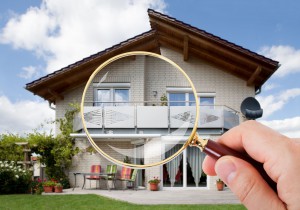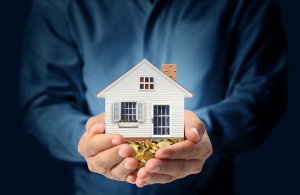We all know that holding a high growth property with a reasonable mortgage will have you out of pocket.
That’s because high growth properties tend to have low rental yields.
Well I was recently given a challenge.
The editor of Money Magazine asked me to write an article for their annual property special edition.
She wanted to know what type of property and investor could own for $230 a week.
So here’s what I said:
An investment grade property for $230 per week
Many investors have extra funds they can invest every week, but they probably don’t know what a difference $230 a week could make to their financial futures.
Now to achieve financial freedom investors must first build a substantial asset base before they lower their loan to value ratios to live off the cash flow of the investments. 
This means that when it comes to investing in real estate, investors should invest for capital growth, yet I recognise this means they’ll need to buy a property in locations where rental yields won’t be high, so they will need to fund the negative cash flow for a period of time.
Since 80 per cent of the long-term performance of their property will occur because of its location and only about 20 per cent of its performance will be related to the property itself, choosing the right location at the outset is critical.
This is particularly so at this more mature stage of the property cycle where strong capital growth will not necessarily be assured.
In the meantime investors can ease the burden of poor cash flow by increasing their yield, while at the same time accelerating capital growth, by undertaking renovations that “manufacture” growth, increase rents and enhance depreciation allowances.
The question then is, what do I believe is a great investment opportunity in the current stage of the market cycle?
I would recommend buying a villa unit in a middle-ring suburb of Melbourne for around $700,000, and allowing a budget of $50,000 to undertake a cosmetic renovation.
Villa units were built in the ’60s and ’70s as semi -retirement residences in Melbourne’s established leafy suburbs.
They are standalone single-storey dwellings with their own courtyards and garages and are usually in blocks of four to six.
Today, they are a preferred style of accommodation for many young families who can’t afford a standalone home but want a property with a land component that has separation from neighbours – as opposed to apartments.
As the accompanying table shows, the investor will need to accept the fact they will be out of pocket around $230 per week, however in return a well-located property in one of Melbourne’s middle ring suburbs should increase in value, on average, by around eight per cent per annum over the long-term.

As long as they can fund the property investment for the first few years, either from their surplus cash flow or by setting up a financial buffer in an offset account or the like, investors should be prepared to accept this negative cash flow as a necessary part of building their asset base.
The right location
To ensure their property outperforms the market with regards to capital growth and to safeguard against significant cyclical fluctuations in price, they should invest the type of location that will outperform the averages because it has strong local economic growth which will lead to jobs and wages growth.
Interestingly, Melbourne created more full time jobs last year than in the rest of Australia combined so that’s a great place to start your property search. 
Then I’d be looking to buy into areas where wages are growing above average as the residents will have more disposable income to spend on buying or upgrading their homes.
Some suburbs where I’d be house hunting in the $700,000 price range include Hampton East, Carnegie, Glen Huntly, Elsternwick, East Malvern, Glen Iris, Surrey Hills and Burwood.
These suburbs all have a long history of outperforming the average capital growth and are likely to continue to do so because of the demographics of the people who live in these areas.
As demographics will be one of the biggest factors determining capital growth, I also look for suburbs that are gentrifying and I would avoid blue-collar areas which may suffer if unemployment creeps up a little.
These are also the areas where wages growth tends to be capped to the CPI.
Then investors should look for the right location within that suburb. Some liveable streets will always outperform others, and in those streets some properties will always be more desirable than others.
Then they need to find the right property at the right price.
This doesn’t mean looking for a “cheap” property – there will always be cheap properties available in secondary locations.
Instead I’d be looking for the right property at a good price.
My 6 Stranded Strategic Approach
To ensure they buy an “investment grade” property that outperforms the market, investors should consider using my 6-Stranded Strategic Approach, which means that they would only buy a property:
- That appeals to owner occupiers. Not that they should plan to sell their property, but because owner occupiers will buy similar properties pushing up local real estate values. This will be particularly important in the future as the percentage of investors in the market is likely to diminish.

- Below intrinsic value – that’s why I would avoid new and off-the-plan properties which come at a premium price.
- With a high land to asset ratio – that doesn’t necessarily mean a large block of land, but one where the land component makes up a significant part of the asset value.
- In an area that has a long history of strong capital growth and that will continue to outperform the averages because of the demographics in the area as mentioned above.
- With a twist – something unique, or special, different or scarce about the property, and finally;
- Where they can manufacture capital growth through refurbishment, renovations or redevelopment rather than waiting for the market to deliver me capital growth.
Now add value through renovations
Once they find the right property the budget of $50,000 would enable them to undertake a substantial cosmetic renovation.
As their property would most likely be purchased from an older person, perhaps moving into a retirement home, while structurally sound, it is likely to need updating.
Their budget would allow for a new kitchen including new appliances, an updated bathroom, split-system air conditioning, new curtains and carpets as well as polishing the old floorboards in part of the dwelling.
Undertaking this type of renovation will make the property appealing to a wide range of tenants (increasing the rental yield) as well as potential owner occupiers who would now pay in the order of $820,000 for it.
So how do you fund it?
To fund this property, the investor would in essence be borrowing:
- 105 per cent of the purchase price – in other words the full cost of the property plus stamp duty and conveyancing costs.
- $50,000 in renovation costs.
- $65,000 as a financial buffers for a rainy day, for renovation cost overruns and as funds to service the cash flow shortfall for the first three years. This is just a contingency and no interest is payable on this unless the money is used.
The 20% deposit ($140,0000), plus purchase costs ($35,000), plus the cost of the renovation ($50,000) as well as setting up a line of credit for the buffer, would occur using an equity release loan against the investors existing home. 
Then their finance broker would most likely borrow the balance of the 80 per cent of the purchase price with a second lender using the new investment property as security.
If the renovation is done well, the property would likely be worth around $820,000, so our invetsor would have already manufactured significant capital growth, plus they would get a higher rental return and depreciation benefits under the proposed new legislation which limits depreciation on existing properties to items purchased by the investor.
As adjoining table shows, our investor is likely to be around $230 a week out of pocket after tax.
They could fund this negative cash flow either out of the surplus cashflow of their family budget or my preferred method would be to set up a line of credit using the equity in their home.
This is like having a big credit card to fund any negative cash flow for the first few years.
Of course, their property could easily increase in value by close to $200,000 over the next three years (around 8% a year), which is considerably more than the $36,000 negative cash flow they would experience over that period.
Why would you fund it this way?
While I know some may find the concept of borrowing from a line of credit to pay interest unusual, it is common business practice. 
For example, if I bought the coffee shop down the road to run as a business, I would borrow money from the bank for goodwill, plus some extra for the stock in trade.
I would also ask for a loan for working capital to help fund my cash flow shortfall until my business found its feet, recognising that most businesses don’t have strong cash flows in the first few years.
It’s much the same with property investment – especially for investment grade properties that are going to grow in value far more than the out of pocket expenses every year.
………………………………………………………….
IF YOU’RE ALREADY AN EXPERIENCED PROPERTY INVESTOR OR YOU WANT TO “FAST TRACK” YOUR SUCCESS…
Here’s your chance to invest 2 powerful days and learn renovation and development strategies that experienced property experts are using around Australia to “manufacture” capital growth and generate strong rental returns, so that they can win in today’s challenging property markets.
TAKE YOUR PROPERTY INVESTING TO A WHOLE NEW LEVEL BY JOINING ME IN OCTOBER AT MY…
PROPERTY RENOVATIONS & DEVELOPMENT WORKSHOP.

What’s it all about? Click here and find out more.
Maybe now it’s time you stepped up and played in the big league by getting started in property renovations or development.
This is the course where other “experts” who are now teaching got their education. Click here find out more and reserve your place
Michael Yardney
………………………………………………………….
from Property UpdateProperty Update https://propertyupdate.com.au/what-does-it-really-cost-to-own-an-investment-grade-property/

No comments:
Post a Comment